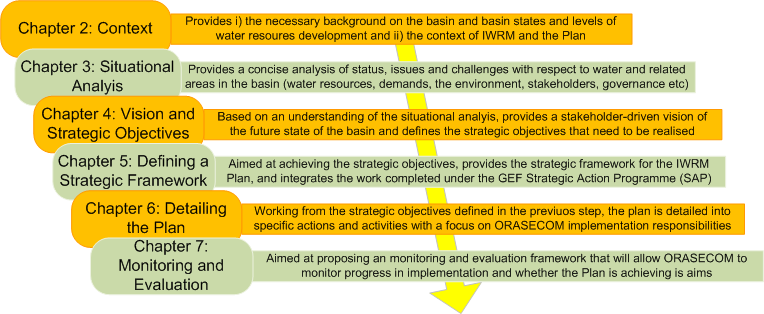Welcome to the first surface water quantity report of the Orange-Senqu River Commission (ORASECOM), for the hydrological year 2020-2021. For Read more
Categories
Latest Submission
2020-2021 Orange-Senqu Surface Water Quantity Synoptic Analysis
Khakea-Bray Transboundary Dolomite Aquifer Recharge Assessment
Documentation and Data: A read-only folder structure of all reports, data, and models related to the STAS can be accessed Read more
Improving Groundwater Knowledge in Selected Transboundary Aquifers
Documentation and Data: A read-only folder structure of all reports, data, and models related to this study can be accessed Read more
Stampriet Transboundary Aquifer System (STAS) – Governance of Groundwater Resources in Transboundary Aquifers (GGRETA) Project
Documentation: A read-only folder structure of all reports, data, and models related to the STAS can be accessed from here: Read more

- WIS > Integrated Water Resources Management > 2014 Integrated Water Resources Management Plan (IWRMP) – Summary and Documents
2014 Integrated Water Resources Management Plan (IWRMP) – Summary and Documents
- Author:Bennie Haasbroek
- Post date:4 December, 2014
- Categories:Integrated Water Resources Management,Policy, Legislation and Strategies
Purpose:
This article will provide an overview of the 2014 IWRMP and provide links to the actual documents
Related WIS Articles:
2014 Integrated Water Resources Management Plan – Development and Supporting Studies
Reports:
- ORASECOM, (2015) Integrated Water Resources Management Plan for the Orange-Senqu River Basin – Executive Summary, Report by GIZ for ORASECOM, ORASECOM Report Number: 020/2014, Centurion, South Africa
- ORASECOM, (2015) Integrated Water Resources Management Plan for the Orange-Senqu River Basin – Main Report, Report by GIZ for ORASECOM, ORASECOM Report Number: 020/2014, Centurion, South Africa
The Report consist of the following chapters:
- Introduction (This Article)
- Context (This Article)
- Situational Analysis
- IWRM – Vision and Strategy
- The IWRM Plan – Strategic Framework
- Detailing the Plan
Introduction
The purpose of this report is to layout the Orange-Senqu River Basin Commission’s (ORASECOM) 10 year basin-wide Integrated Water Resources Management (IWRM) Plan covering the period 2015-2024. This represents the end point of a preparatory process that has been built on a wide range of studies, projects and programmes carried out at the regional, basin-wide and national scales. ORASECOM has been responsible for the execution and management of many of these.
It is important to stress that it is focused on defining and prioritizing only ORASECOM’s actions and activities over the next ten years. However, in order to do this it has been necessary to develop a holistic plan within the spirit of IWRM, even though the majority of actions and activities in the Plan will be planned, prioritized and carried out (or are already being carried out) at the national level by national institutions without any interference from ORASECOM.
The objectives of ORASECOM (the Council) are provided in Art. 4 of the ORASECOM Agreement where is stated that it “shall serve as technical advisor to the Parties on matters relating to the development, utilisation and conservation of the water resources in the River System….” To this end, the terms of reference for this study stated that “the Plan is aimed at providing a framework for the management, development and conservation of water resources in the Orange-Senqu River Basin, serving to advise Parties on optimising overall water resource utilisation”.
The aim has been to compile a plan that comprises a convincing and integrated piece of advice where the reasons behind the various proposed actions can be easily understood within the development and management context of the basin and its peoples. A key aspect of the plan is that it fits within the context of existing regional and national development plans/strategies, as well as into a longer general planning horizon.
An important point that is addressed in this report is the role that ORASECOM should play with respect to implementation of the plan. Like any cross-sectoral and integrated plan, implementation will be carried out by a wide range of institutions at the national, bilateral and transboundary levels. ORASECOM is not an implementation agency but it will be responsible for the management of many transboundary elements of the plan and that it will play a leading role in monitoring and evaluating progress that is made toward a Vision of the basin in the future. It will also play a role in ensuring that feedback received from stakeholders is heard and taken into account as the Plan is reviewed on a regular basis.
The contents of this report have been organised as follows:
More detail to follow.




Comments
You must be logged in to post a comment.